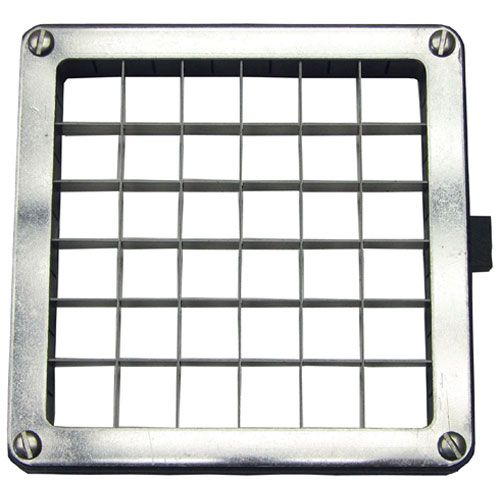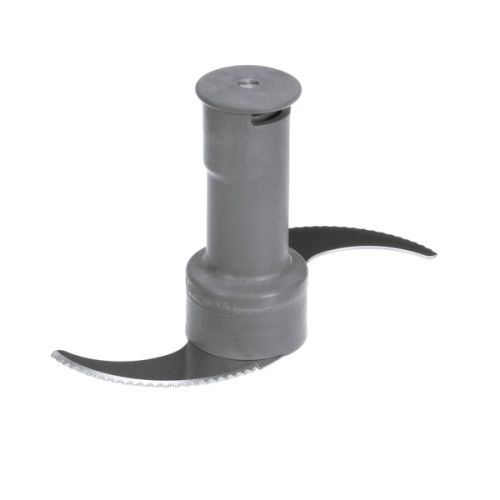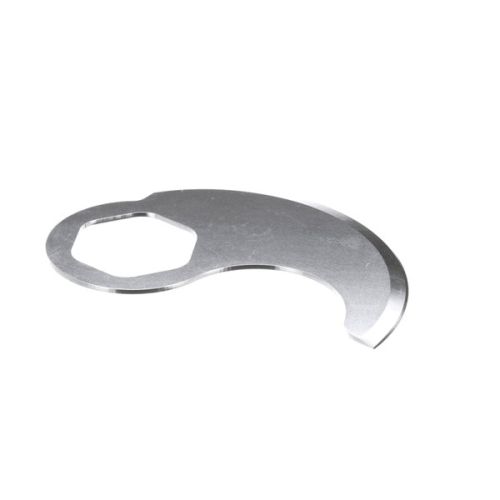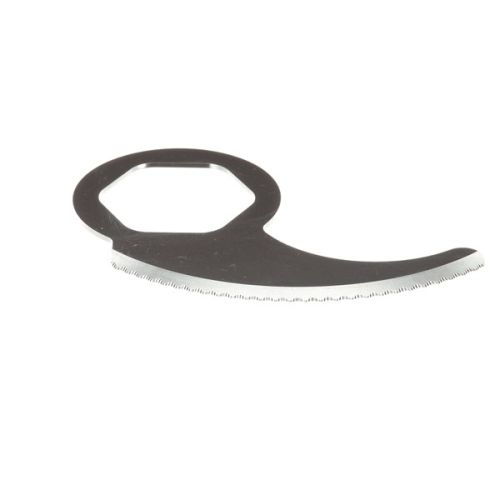The Best Way to Keep Your Commercial Slicer Blade Sharp
Keeping your commercial slicer blade sharp is essential for maintaining efficiency, safety, and food quality in any professional kitchen. A dull blade can tear rather than slice, leading to uneven cuts, wasted product, and increased risk of accidents. Regular maintenance not only extends the life of your equipment but also ensures consistent performance, whether you're slicing meats, cheeses, or vegetables. In this guide, we’ll explore the best ways to keep your slicer blade sharp, from routine cleaning and honing to proper storage and professional sharpening techniques. Whether you run a busy restaurant or catering business, understanding the right maintenance practices will save you time, money, and effort in the long run, while delivering perfect slices every time. Let’s dive into how to keep your slicer at its best.
Understanding Slicers and the Importance of a Sharp Blade in Commercial Kitchens
Commercial slicers are essential kitchen tools in restaurants and catering. Designed to cut meats, cheeses, and other foods with speed and precision, these machines are built for high-volume use. Unlike household slicers, commercial models are:
-
More durable and long-lasting
-
Equipped with powerful motors for continuous operation
-
Designed with adjustable thickness settings for versatility
A sharp blade is vital for maintaining top performance. Here's why:
-
Consistent and Clean Cuts: Ensures uniform slices that improve food presentation and reduce waste
-
Improved Efficiency: Cuts down on the time and effort needed for slicing, particularly in hectic settings.
-
Enhanced Safety: Dull blades require more force, increasing the risk of slips and injuries
In short, sharpening your commercial slicer blade regularly is crucial for quality, safety, and operational efficiency.
Signs That Your Slicer Blade Needs Attention
Recognizing the early signs of a dull blade is key to maintaining food quality, operational efficiency, and kitchen safety. Over time, even the highest-quality commercial slicer blades will start to dull, especially with frequent use.
The following are the most typical signs that your slicer blade needs to be replaced or sharpened:
-
Torn Slices: If your meats or cheeses are coming out shredded, torn, or inconsistent in thickness, the blade is likely dull.
-
Unusual Vibrations: A properly functioning slicer should run smoothly. Grinding sounds or vibration can indicate blade wear or imbalance.
-
Burn Marks: A dull blade creates friction, which may heat up the product and even leave visible marks.
-
Jagged Edges on Sliced Products: When slices have uneven or jagged edges instead of smooth cuts, the blade is likely dull or damaged.
-
Uneven Slice Thickness: If slices vary in thickness despite adjusting the settings, it indicates the blade has lost its sharpness.
-
Increased Friction: A dull or damaged blade causes the slicer to “catch” on the product, instead of gliding smoothly.
-
Visible Nicks or Dents: Nicks, chips, or dents on the blade can prevent it from slicing properly and may require sharpening or replacement.
-
Increased Residue Build-up: A dull blade leads to food particles sticking to the blade, causing extra build-up and requiring frequent cleaning.
Neglecting these signs may result in inadequate food presentation, broken equipment, and elevated safety hazards.
Steps to Keep Your Commercial Slicer Blade Sharp
Properly sharpening your commercial slicer blade is essential for ensuring smooth, precise cuts and prolonging the life of your equipment. Follow the below steps to maintain your slicer blade with ease and efficiency.
Step 1: Prepare the Work Area
-
Organise Your Workspace: To prevent mishaps, make sure the room is neat and distraction-free.
-
Ensure Proper Lighting: For intricate tasks like sharpening, adequate illumination is essential.
-
Gather Necessary Tools: Make sure you have your sharpening tool, gloves, and cleaning supplies ready.
-
Wear Safety Gear: Wearing gloves is a smart idea to prevent your hands from coming into unintentional contact with the sharp blade.
Step 2: Remove the Blade from the Slicer
-
Turn Off and Unplug the Slicer: Always disconnect the slicer from power before removing the blade to prevent accidents.
-
Follow the Manufacturer’s Instructions: Slicers may have different systems for removing the blade. Refer to the user manual for your specific model.
-
Use a Blade Removal Tool: Some slicers come with a specific tool to safely remove the blade and use it to avoid damage.
-
Handle the Blade Carefully: Remember, commercial slicer blades are very sharp, so use caution when handling.
Step 3: Clean the Blade
-
Wash the Blade with Warm Soapy Water: Use a soft cloth or sponge to clean off any food residue, grease, or dirt on the blade.
-
Dry the Blade Thoroughly: To prevent rust or moisture buildup, make sure the blade is totally dry after cleaning.
-
Inspect Remaining Debris: Double-check that no food particles are stuck in the blade’s teeth or around the edges.
-
Use a Brush for Small Crevices: For stubborn food residue, use a small brush to clean the blade’s edges carefully.
Step 4: Inspect the Blade
-
Look for Visible Damage: Examine the blade for any obvious damage, such as chips or cracks, that could impair its functionality.
-
Examine the Edge for Dullness: A dull blade will have a smooth, rounded edge rather than a sharp, clean one.
-
Flexibility Test: If the blade feels flexible or deformed, it may need to be replaced instead of sharpened.
-
Check for Rust or Corrosion: Rust can weaken the blade and should be cleaned carefully, but it may indicate the need for replacement.
Step 5: Sharpen the Blade
-
Use Sharpening Stone: When sharpening by hand, hold the blade at the proper angle, usually between 15 and 20 degrees, and place the stone on a firm surface.
-
Sharpen Using Smooth Strokes: Move the blade slowly across the stone, applying even pressure to maintain a consistent edge.
-
Sharp in One Direction: When using a stone, always sharpen in one direction to avoid damaging the edge.
-
Consider Using Honing Rod: If the blade is only slightly dull, a honing rod can help realign the edge without removing material.
Step 6: Check the Blade’s Sharpness
-
Test Using a Piece of Paper: Try using the blade to cut a sheet of paper at one end; if it slices through smoothly, the paper is sharp.
-
Perform Tactile Test: Gently run your finger (carefully!) along the edge to feel for sharpness.
-
Check the Slice Consistency: Test the blade on a soft item like a tomato to see if it slices evenly and cleanly.
-
Repeat if Necessary: Repeat the sharpening procedure until you get a clean, sharp edge if the blade is still not sharp enough, then replace it.
Step 7: Reinstall the Blade
-
Follow Safety Precautions: Always wear gloves when handling the sharp blade.
-
Ensure Proper Alignment: Place the blade back in the slicer, making sure it is correctly aligned with the machine’s blade holder.
-
Tighten all Screws and Fasteners: Ensure that the blade is securely fastened before turning the slicer back on.
-
Check for Stability: Gently wiggle the blade to ensure it is firmly in place and there’s no wobble or looseness.
Step 8: Test the Slicer
-
Slice Small Pieces: Start by testing the slicer on something soft and easy to cut, like a tomato, to check if the blade is working correctly.
-
Inspect the Slices: Make sure the slices are uniformly thick, smooth, and uniform.
-
Listen for Unusual Sounds: If the slicer is making grinding noises or vibrating, it may indicate an issue with the blade alignment or balance.
-
Check the Slicing Speed: Ensure the slicer is operating at its normal speed without any extra effort required.
By following these expanded steps, you can maintain your commercial slicer blade in top condition, ensuring efficient operation, consistent cuts, and longer equipment life.
Read this KitchenAid mixer repair guide to learn how to troubleshoot common issues.
Maintenance Tips to Prolong the Life of Your Commercial Slicer Blade
To ensure the longevity of your commercial slicer blade and keep it performing at its best, here are some unique maintenance tips that go beyond the usual cleaning and sharpening routines:
-
Use a Blade Guard for Protection: Always store the slicer blade with a protective cover when not in use. This prevents accidental nicks, dust buildup, and damage from other kitchen tools.
-
Apply a Protective Coating: After cleaning and drying, apply a thin layer of food-safe oil or silicone spray. This protects the blade from moisture and rust, especially in humid environments.
-
Use Approved Cleaning Solutions: Stick to gentle, non-abrasive cleaners designed for food service equipment. Over time, the blade's sharpness may be impacted by damage from harsh chemicals or abrasives.
-
Rotate Blade Usage: Regularly rotate the use of multiple blades to ensure even wear. This gives each blade time to rest and prevents one from wearing out too quickly.
-
Check Blade Tension Regularly: Check the blade tension frequently to ensure it's set correctly. Too much tension stresses the blade, while too little affects its slicing precision.
-
Keep the Slicer Dry: Wipe down the slicer and blade with a dry cloth after every use. This eliminates moisture and prevents rust or corrosion from forming on the blade.
-
Use Proper Cutting Techniques: Encourage proper slicing methods to avoid unnecessary pressure on the blade. Premature wear and damage to the blade might result from cutting frozen or hard objects.
-
Store Properly When Not in Use: The slicer should be kept dry and clean, free from moisture and high or low temperatures. To avoid unintentional knocks, make sure it is set on a sturdy surface.
Check out this article on prolonging your restaurant’s equipment lifespan to ensure longevity.
Maintaining a sharp commercial slicer blade is not just about precision and it’s a matter of safety, efficiency, and cost-effectiveness. A dull blade can slow down operations, damage food quality, and increase the risk of injury. By committing to regular cleaning, timely sharpening, and proper storage, you ensure your slicer performs reliably day after day. These small, consistent maintenance steps can extend the lifespan of your equipment and reduce unnecessary downtime or repairs. Investing a few minutes daily in blade care can save hours in lost productivity and hundreds in replacement costs.
Looking to keep your commercial slicer blade in top condition? PartsFe has you covered with premium replacement parts from trusted brands like Hobart, Globe, and Berkel. Whether you need slicer blades, sharpener stones, or blade guards, to help your kitchen equipment perform like new.
FAQs
How often should I sharpen my commercial slicer blade?
It depends on usage, but typically, you should sharpen the blade every 2–4 weeks for regular use. Heavy use may require weekly sharpening.
How long does it take to sharpen a slicer blade?
Using a built-in sharpener, it usually takes 1–2 minutes. With a manual tool, it may take a bit longer depending on the blade condition.
What tools are best for sharpening a commercial slicer blade?
Built-in sharpening stones, handheld sharpening tools, or whetstones designed for stainless steel blades are commonly used.
How long does a commercial slicer blade last?
With proper care and regular sharpening, a commercial slicer blade can last several years. However, it should be replaced if it's chipped, warped, or no longer holds a sharp edge.











